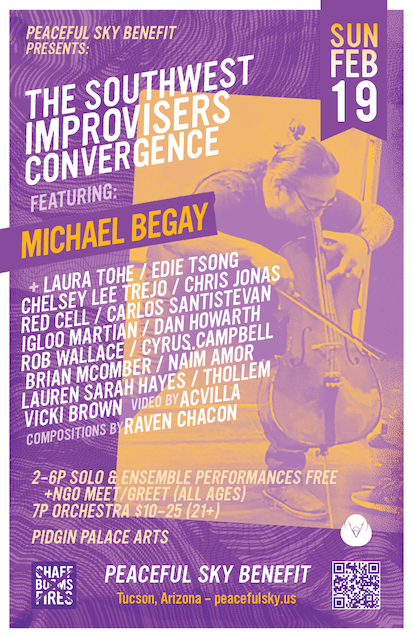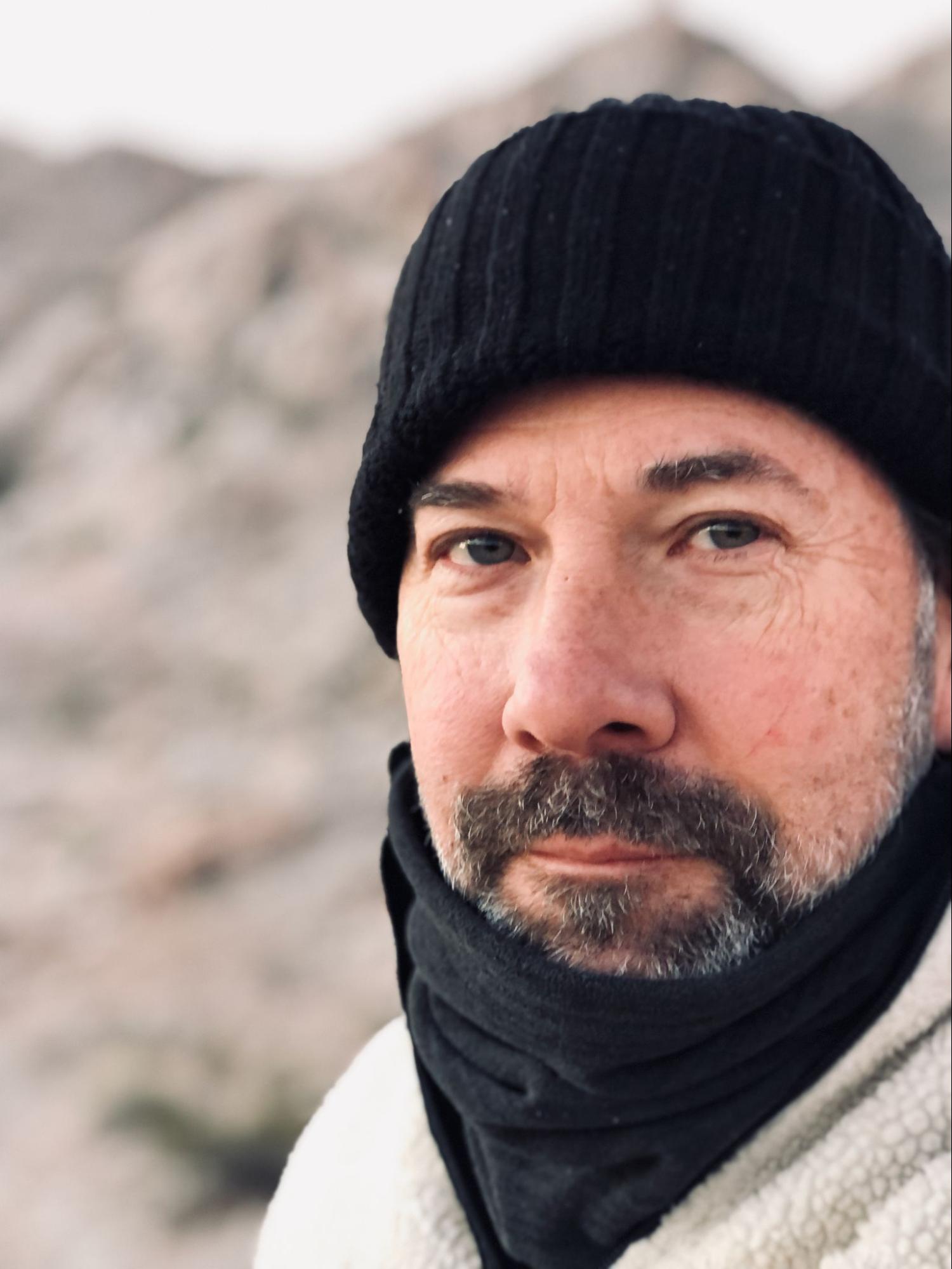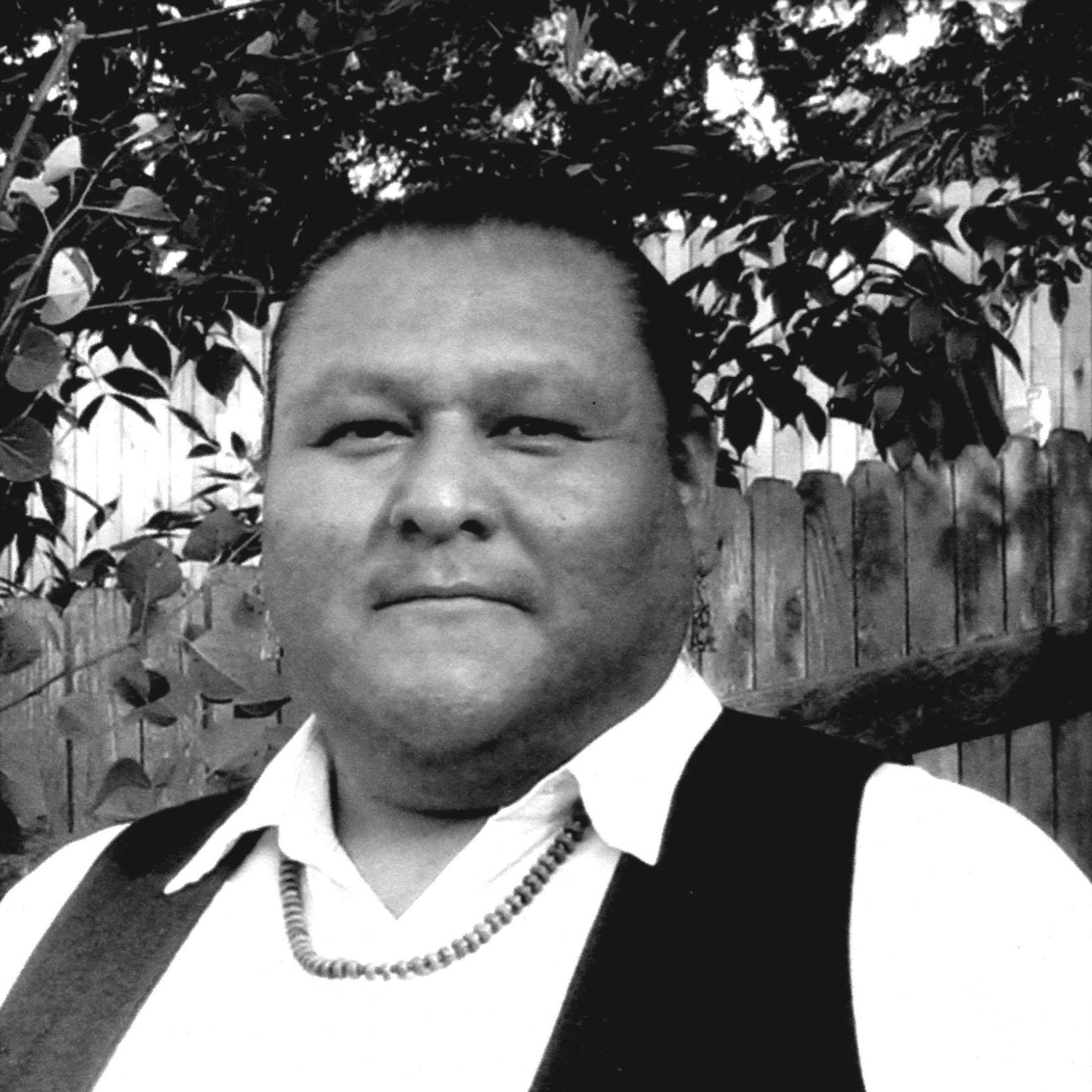URGENT
Two US Air Force proposals threaten to erode the future of outdoor life, research, and recreation in southern Arizona and New Mexico.
In 2022, the Air Force proposed to intensify air combat training (SUA Optimization) over vast protected lands of the Southwest. The process for this plan advanced nearly three years without legitimate analysis, transparency, or public engagement. A final decision is pending.
Spring, 2024, a second proposal was announced: plans to transform Tucson’s Davis-Monthan airbase into the third US Air Force Special Operations hub (SOW Beddown). Tactical developments with profound dangers to public safety would be supported by the devastating airspace permissions awaiting action - and accelerate a foreign policy trajectory the majority of Americans polled reject.
August to November, 2024, a rising movement of concerned elected officials, Tribal Councils, counties, towns, organizations, community groups, businesses, and individuals sent thousands of comments to the Air Force regarding the unacceptability of their report (DEIS) on the proposed changes to rules for regional air combat training.
December, 2024, twenty-seven signatories - including artists, educators, journalists, owners of beloved local businesses, professionals of law and medicine; founders, board members, and coordinators of regional organizations focused on sustainability, conservation, and peace - submitted comments regarding the less conspicuous Air Force report (DEIS) on SOW Beddown, which ignores grave public risk.
You can endorse that document by adding your name to this petition.
We are grateful for military service in defense of liberty. Yet, the proposals to restructure Davis-Monthan and southwest regional airspace demonstrate a culture of complacency and mismanagement that is undemocratic. To renounce dereliction at the highest levels of leadership is to defend honorable service.
Should we forsake regional safety, heritage, and critical ecology to accelerate Irregular Warfare the majority of Americans reject?
Davis-Monthan is being transformed into one of only three Air Force bases in the United States for this function, without democratic transparency.
We urge individuals and organizations to continue fostering awareness and legal action surrounding these proposals - to safeguard the future for Tucson, rural communities, protected tribal and public lands, countryside internationally revered in scientific research, and an entire region of unparalleled ecology.
When facing the proposals’ passage (anticipated 2025), let us reconvene with enough leverage to demand elected officials represent their constituents’ voices.
The health and safety of home must come before the aims of arms-tech investors and weaponry buyers.
Please join and share the petition.
Your consciousness and action are meaningful and appreciated
@peacefulskybenefit
about Peaceful Sky Benefit
February 19-22, 2023
The Peaceful Sky Benefit is civic action in response to the U.S. A.F. SUA Optimization, proposed 2022. It is a grassroots endeavor by concerned citizens, unaffiliated with any agency or organization.
The story of the Peaceful Sky Benefit is not only that all involved share the awareness that these plans are unacceptable. There is a clear pattern connecting New Mexico and Arizona areas of past and present military or industrial debasement with areas critical for unique ecology and societal redress. We are a diversity of individuals, asking for this dereliction of governmental duty to be reformed.
This region supports an unusually complex, international network of wildlife, as well as the heritage of Nations older than the U.S. Federal Government. Unless the goal is never-ending conflict and harm, permission for operations of such extreme impact as mining, military aircraft training, and physical barriers along the border must be considered with more responsibility and humanity, not authorized outside public purview.
Furthermore, there is a tendency for bureaucracy and consolidated power to stave-off grassroots collaboration, especially between dissimilar groups. Our endeavor maintains that finding ways to collaborate, particularly when it may be difficult, is itself a meaningful act of dissent.
Ultimately, the story of the Peaceful Sky Benefit is the many people from different backgrounds, who united their talents without the help of an established organization, to affirm these unacceptable plans are a piece of a much bigger picture which must finally be reformed.
Note - This effort borrows the concept of a peaceful sky from Peaceful Chiricaua Skies and Peaceful Gila Skies, two separate online groups that are the best place to learn about the U.S. A.F. SUA Optimization proposals in New Mexico and Arizona.
A heartfelt thank you to all participants, our GoFundMe contributors, and our community and business supporters: Best Life Presents, Copper Canyon Trails, EVERYBODY, Ruchikala, Indent Books & Magazines, Sand-Reckoner Vineyards
Events Schedule
Exclusive prints of art and photography by regional artists Monica Aissa Martinez, Ahchipaptunhe, and Julius Schlosburg were available to concert-goers who donated $20 or more directly to selected organizations defending threatened regional lands.
Pidgin Palace Arts The Southwest Improvisers Convergence
Co-facilitated by Michael Begay & Thollem
Compositions by Raven Chacon and Michael Begay, plus free and structured improvisations with Chelsey Lee Trejo, Edie Tsong, Chris Jonas, Red Cell, Carlos Santistevan, Igloo Martian, Dan Howarth, Rob Wallace, Cyrus Campbell, Brian McOmber, Naïm Amor, Lauren Sarah Hayes, Vicki Brown, and Navajo (Diné) Nation Poet Laureate Laura Tohe, screening of ACVilla’s 2016 video project 'Who Are US'

Pidgin Palace Arts The Southwest Improvisers Convergence
Co-facilitated by Michael Begay & Thollem
Compositions by Raven Chacon and Michael Begay, plus free and structured improvisations with Chelsey Lee Trejo, Edie Tsong, Chris Jonas, Red Cell, Carlos Santistevan, Igloo Martian, Dan Howarth, Rob Wallace, Cyrus Campbell, Brian McOmber, Naïm Amor, Lauren Sarah Hayes, Vicki Brown, and Navajo (Diné) Nation Poet Laureate Laura Tohe, screening of ACVilla’s 2016 video project 'Who Are US'

Meet the Artists

Michael Begay
A Diné performer/composer of Chamber Music, Experimental Sound, Native American Flute, and Metal music. Michael Begay is a guitarist and bassist, but also plays piano, and various instruments both Native American and orchestral. A graduate of the Grand Canyon Music Festival’s Native American Composer’s Apprentice Project (NACAP); Mr. Begay has studied under both Native and nonnative American Composers: Brent Michael Davids (Mohican), David Mallamud, Jerod Impichchaachaaha’ Tate (Chickasaw), Libby Larson, and Raven Chacon (Diné).

Thollem
Thollem is a perpetually traveling pianist, keyboardist, composer, improviser, singer-songwriter, activist, author and teacher. He’s spent most of his life living on the road throughout North America and Europe. His work is ever-changing, evolving and responding to the times and his experiences, both as a soloist and in collaboration with hundreds of artists across idioms and disciplines. Thollem’s known internationally as an acoustic piano player in the free jazz and post-classical worlds, as the lead vocalist for the Italian agit-punk band Tsigoti, as an electronic keyboardist through a multitude of projects and as the long-term temporary guida of the Sicilian Improvisers Orchestra.

Laura Tohe
Poet, writer, librettist, and scholar of Indigenous American Literature, Laura Tohe is Diné. She is Tsénahabiłnii, Sleepy Rock People clan, and born for the Tódich’inii, Bitter Water clan. She grew up at Crystal, New Mexico near the Chuska Mountains on the Diné homeland. Dr. Tohe is the author of multiple highly lauded books, and her work has been published in many literary journals in the U.S., Canada, South America and in Europe with French, Dutch and Italian translations. She has read her poetry internationally. In 2015, Laura was honored as the current Navajo (Diné) Nation Poet Laureate, a title given to her in celebration and recognition of her work as a poet and writer.

Chelsea Lee Trejo
Tucson native Chelsey Lee Trejo sonically interweaves folk, ambient, and drone music through an experimental/improvisational lens.

Edie Tsong
Edie Tsong is an artist and writer. She has exhibited at The Mattress Factory, Yerba Buena Center for the Arts, Aspen Art Museum, 516 Arts, Babel Kunst, April Meetings in Belgrade and participated in The PASEO, PICA’s TBA Fest. She is the recipient of the Lilla Jewel Foundation grant and the SPREAD 3.0 SITE Santa Fe grant. She was the Founding Director of Cut+Paste Society, women writers and artists in Santa Fe (2009 - 2015) and their project city-wide Snow Poems Project (2011 - 2018). She is a VONA alumna and the regional chair of Kundiman, Asian-American Writers.

Chris Jonas
Chris Jonas is a Santa Fe-based composer/video artist. He has worked with many of today’s most adventurous artists including Cecil Taylor, Del Sol String Quartet, TILT Brass, the Crossing Choir, and others. Jonas is a United States Artists Fellow and a winner of the Meet the Composer/Commissioning USA Award for GARDEN, his ongoing series of live music and transmedia works. He is Littleglobe’s Co-Director, a NM arts and social justice non-profit. Jonas is currently mid-stream on realizing a video and music project “From the Deserts,” working with ensembles in Italy, Santa Fe, Berlin and the Bay Area.

Red Cell
Red Cell is a curator, artist, arts facilitator, and musician with 20+ years experience in contemporary arts & music non-profits. Red curated The Process, an alternative arts and music non-profit, bringing hundreds of artists and performers to Santa Fe, NM. Red co-founded The AHA Festival of Progressive Arts, the largest alternative arts festival in the Southwest. Red served as Director and Curator of the MOV-iN Gallery, the only New Media and time-based art gallery in the Southwest. He was also half of The Product Division, who had the honor of being the first artists-in-residence for the William S. Burroughs estate.

Carlos Santistevan
Carlos Santistevan is a musician, sounds engineer, and organizer. Since 2001 he has helped establish an oasis of creative music in the high desert southwest as the director of the High Mayhem Emerging Arts collective based out of Santa Fe, NM. Using an upright bass and electronics he creates soundscapes and spontaneous compositions from the extremes of acoustic and electric music. Early influences of punk rock and free jazz have led him to develop a unique approach to music and improvisation. He has performed at High Zero Festival, Ende Tymes Festival, The Outpost Performance Space, Hemlock Tavern, SITE Santa Fe, the Empty Bottle, Outsound Creative Music Festival, The Olympia Experimental Music Festival, High Mayhem Festival and more performing with such artists as: J.A. Dino Deane, Laura Ortman, Thollem McDonas, Tania Caroline Chen, Marshall Trammell, Chris Jonas, Tatsuya Nakatani and more. Carlos is a seasoned improviser and a member of diverse ensembles such as In Defense of Memory, iNK oN pAPER, The Uninvited Guest(s), The Late Severa Wires, Out of Context, Black Iron Trio, Taiji Pole and more.

Igloo Martian
Nearing TWENTY YEARS, Igloo Martian is the sound, performance art explorations of R. Clark. IGLOO had stumbled upon the outsider art of circuit bending early 2000s and initially formed the Igloo Martian moniker as a myspace handle to connect with other sonic explorers on the now defunk social media platform of Myspace. From within a basement they would mutate cheap electronic kids sound toys into one off instruments. Keeping with the initial chaos theory of circuit bending and chance, Igloo, for the past 15 years has included performance art, dadaism, free improv, noise, and anti-theory as additional points of reference for their live performances.

Rob Wallace
Writer, musician, and teacher Rob Wallace is an Associate Teaching Professor at the Honors College of Northern Arizona University. Wallace has collaborated with a wide variety of musicians from around the globe and is the co-curator of the Interference Series. He holds a Ph.D. in English Literature from the University of California, Santa Barbara. His recordings can be found on the pfMentum, Ambiances Magnétiques, and Nonessential record labels. He is the author of Improvisation and the Making of American Literary Modernism (Bloomsbury) and co-editor (with Ajay Heble) of People Get Ready: The Future of Jazz is Now! (Duke).

Cyrus Campbell
Cyrus Campbell, Santa Fe, NM native, is a double bassist who is a regular in New Mexico based jazz and creative music projects, playing regularly with Eddie Daniels, James Emery, Alex Murzyn, Chris Jonas, Donald Bailey, John Trentacosta and many others. He has performed all over the US as well as the southwest region. He studied at Berkeley College of Music.

Brian McOmber
Brian was the longtime drummer of the Dirty Projectors, and has collaborated with the likes of David Byrne, St. Vincent, The Roots and Björk to name just a few. As a film and TV composer, Brian has contributed to Emmy, Oscar, Peabody and Independent Spirit Award-winning narrative and documentary releases from companies such as A24, Amazon Studios, Fox Searchlight, HBO, Jigsaw Productions, Magnolia, MRC, NEON, Frontline PBS, Showtime and T-Street Productions. He has written and performed on dozens of original soundtracks including those for Trey Edward Shults’ hybrid horror films, KRISHA and IT COMES AT NIGHT, Penny Lane’s bizarro documentaries, HAIL SATAN? and NUTS!, Danielle Krudy and Bridgette Salvage Cole’s dark thriller, 16 SHOTS and DOCUMENTING HATE, and Anurag Kashyap’s Hindi-language thriller, UGLY.

Naïm Amor
Naïm Amor is a French born, Parisian musician who moved to Tucson, Arizona in 1997, where he lives with his family. Before moving to the US in the early 90's, Naïm was part of a theater/dance/music ensemble called Generation Chaos lead by director/writer Marc'O and composer Jean Charles François. Then, in the US, Naïm started the “experimental avant pop” Amor Belhom Duo, with drummer Thomas Belhom, that produced three albums. Naïm then met and recorded with Joey Burns and John Convertino of the band Calexico. He has played guitar on tour and also on recordings with Howe Gelb, worked with John Parish, plays on numerous albums as guest guitar player (Dean Owens, Fredda, Howe Gelb, Marianne Dissard, Andrew Colberg, Al Foul…). He also composes film/short film soundtracks between recording his albums.

Lauren Sarah Hayes
Lauren Sarah Hayes is a Scottish live electronics improviser, sound artist, and scholar. Her music mixes experimental pop/techno/noise/free improvisation and has been described as ‘voracious’ and ‘exhilarating’. She is a sculptress of sound, manipulating, remixing, and bending voice, drum machines, analogue synths and self-built software live and physically. The Wire described her 2016 album MANIPULATION (pan y rosas discos) as “skittering melodies and clip-clopping rhythms suggesting a mischievous intelligence emerging from this web of wires”. Her recent 2021 release Embrace (Superpang) was included in Bandcamp’s Best Experimental Music of February 2021. She is a member of the New BBC Radiophonic Workshop and Associate Professor of Sound Studies at Arizona State University.

Vicki Brown
Vicki Brown is a Tucson-based musician and composer with a penchant for improvisation. Besides her solo work, she thrives on the alchemy of working with a variety of artists, including choreographers, dancers, filmmakers, writers, painters, and actors. Music from her two solo albums, Winter Garden (2006) and Seas & Trees (2009), appears in the Oscar-nominated HBO documentary films, GASLAND (2010) and GASLAND II (2013). Vicki has toured and recorded with numerous bands nationally and internationally since 2006. She received her PhD in Psychology from the University of Arizona in 2003.

Gabby Isaac
Gabriella Isaac is a computer musician from Phoenix, Arizona whose work explores and creates physical ways of engaging with digital and electronic sound. Her background in classical piano and personal interest in punk music led her to study Digital Culture at ASU's School of Arts, Media + Engineering. She studied digital sound and received both her B.A. (2016) and M.A. (2018) from the program. Her current work uses the audio feedback loop that occurs between the microphone and speaker of her laptop as a source of musical material and as a physical point of engaging with the sound itself

Raven Chacon
Raven Chacon (Diné) is a composer, performer and installation artist from Fort Defiance, Navajo Nation. As a solo artist, collaborator, or with Postcommodity, Chacon has exhibited or performed at Whitney Biennial, documenta 14, REDCAT, Musée d’art Contemporain de Montréal, San Francisco Electronic Music Festival, Chaco Canyon, Ende Tymes Festival, 18th Biennale of Sydney, and The Kennedy Center. Every year, he teaches 20 students to write string quartets for the Native American Composer Apprenticeship Project (NACAP). He is the recipient of the United States Artists fellowship in Music, The Creative Capital award in Visual Arts, The Native Arts and Cultures Foundation artist fellowship, the American Academy’s Berlin Prize for Music Composition and the 2022 Pulitzer winner for composition.

ACVilla
Since 2008, ACVilla (Chicana, b. 1968) has been perpetually touring as a visual artist whose photography, projections and videographies have been shown throughout the US and Europe in DIY spaces, museums, galleries, schools, and universities with musicians and dancers. While she uses digital equipment, her process and minimal post-production gives the results of her pieces an analog feel. In 2016 she set off with Thollem on a 48 state journey around the continental U.S. documenting the moments where people come into contact with each other and their environment. This resulted in hours of footage that the duo presented to audiences as they traveled as well as a final hour-long piece called Who Are U.S.

Sage Bond
Hailing from the four corners region of the Navajo Rez, Sage Bond is a singer-songwriter and composer, working with influences from personal life, culture, and heavy metal. Bond's first release was a self-titled EP (2014), followed by Prisoner (2018). During the pandemic, Sage released the single "Truth”, from which proceeds went to a local hospital for PPE.

Just Najima
Just Najima combines traditional country blues with moody, southwestern soul to create an evocative sound that will give voice to your breaking heart. Named for singer and native Tucsonan, Najima Rainey, Just Najima brings a modern urgency to traditional music perfect for these troubled times. Her powerful vocals will grab your attention and wrap you in dreams of the lonesome desert.

Flor de Nopal
Born in the bustle of Mexico City and raised in the desert of their father’s ancestral lands, Flor de Nopal is a blossom born from the collision of multiple cultures on one land. A celebration of border existence and resistance, an homage to the flora and fauna around us, Flor de Nopal brings their experimental synth compositions to perk ears and feed brown souls; music is their offering.

Ruben Cu:k Ba’ak
Ruben Cu:k Ba’ak is an enrolled member of the Tohono O’odham Nation. He is a traditional O’odham and continues to learn about his O’odham Himdag, language, philosophies, and songs from his Elders and mentors. Ruben endeavors to bring back narrations of O’odham Himdag, not only to enrich our communities but to better serve them.

Crisosto Apache
Crisosto Apache is originally from Mescalero, New Mexico, on the Mescalero Apache reservation, and currently lives in the Denver area with their spouse. They are Mescalero Apache, Chiricahua Apache, and Diné (Navajo) of the Salt Clan born for the Towering House Clan. They hold an MFA from the Institute of American Indian Arts in Santa Fe, New Mexico, and are an Assistant Professor of English. Crisosto’s debut collection is GENESIS (Lost Alphabet), and their second collection is Ghostword (Gnashing Teeth Publications). They are Associate Editor of The Offing Magazine.

Lynnette Haozous
Lynnette Haozous is an enrolled member of the San Carlos Apache Tribe (Chiricahua Apache), and is part Diné, and Taos Pueblo. Haozous is a multi-media artist, advocate, and artist educator, currently based in Albuquerque, New Mexico. While Haozous is most recognized by her public mural works, she also works in large scale acrylic paintings, drawings, installations, digital illustrations, and community art workshops. Haozous received her Bachelors degree in Social Work from New Mexico Highlands University in 2016, which now extends into her art teaching, and artivism and advocacy work. The Carrier of Life mural was created by Haozous in 2019, commissioned by the Harwood Arts Center in Albuquerque, NM, for the Encompass exhibition. Haozous incorporated the words “I will have peace when my future children have clean water, food, land, and air” as a reminder to take care of our Earth that sustains our future.

Unwound
Born in 1991 in the Pacific Northwest as the Riot Grrrl and grunge musico-social movements took hold of underground pop culture, Unwound leveled their small corner of the ’90s punk scene with a scathing Future of What barrage in the brightest corners of the underground. One of the flagship bands of the Kill Rock Stars label, the band also released material on iconic labels such as Gravity, Troubleman Unlimited, and Matador over their initial 10 year run. A notoriously relentless touring act, Unwound temporarily ended their endless adventure on April 1st 2002. Unwound faced the devastating death of bass player Vern Rumsey, in 2020. The passage of time and Vern’s absence only made the idea of circling back stronger. With the addition of Jared Warren (Karp, Melvins, Big Business) and Scott Seckington (Nocturnal Habits, Two Ton Boa, Old Haunts), Unwound has returned to the stage, taking ownership of the band’s legacy with honor for former bandmate and bassist Vern.

Quasi
Breaking the Balls of History is Quasi’s tenth record, landing ten years after their last record, on February tenth. Three tens, which aligns with the thirty years they’ve played together. Sam Coomes and Janet Weiss have become Pacific Northwest icons, and Quasi has always felt so steadfast— their enduring friendship so generative, their energy infinite, each album more raucous and catchy and ferocious and funny than the last. But we were wrong to ever take Quasi for granted. For a while, they thought 2013’s intricate Mole City might be their last record. In August 2019 a car smashed into Janet’s and broke both legs and her collarbone. Quasi rose from that accident, and channeled the bewilderment and absurdity of the pandemic into songs that became Breaking the Balls of History.

Sonya Blade
Sonya Blade is Gilbert Flores, Mike Faye, Matt Underwood, Ryan Chavira, and Hannah McCain

Hot Pursuit of Happiness
Thollem (Wavestate, vocals)
Brian McOmber (drums)
Hot Pursuit Of Happiness started off as Thollem’s (Tsigoti, Hand To Man Band) solo outlet as a singer/songwriter and live beat maker. It was one of his pandemic lockdown projects while in northern New Mexico. Combining experiments in pop music production with elements of noise and other exploratory approaches, the first album, This Day’s Called Tuesday, was released last year on Personal Archives. Tonight he'll be joined by Brian McOmber on drums. Brian was the longtime drummer of the Dirty Projectors, and has collaborated with the likes of David Byrne, St. Vincent, The Roots and Björk to name just a few. Using the first album as a jumping off point, the set for this concert is a collaboration between Thollem and Brian, created specifically for this event.
"Thollem knots together philosophical koans about the nature of existence. A seamless mix of the blues, jazz, protest music and punk rock.” - Iggy Pot, LiveEye TV

Los Velvets
Los Velvets are an independent band straight out of the Sonoran-Arizona Desert, and are currently based in Tucson, Arizona. The band was formed as a recording project in 2020 during the pandemic by Fabian Ríos, Samuel Bencomo, and Alec André Ruvalcaba. With the addition of drummer Jorge Parker and multi-instrumentalist Nicole Paco, they started playing high energy live shows from Hermosillo, MX to Phoenix, AZ. Experimenting with sounds from Psychedelic Rock, Dream pop, and taking inspiration from various other genres, they create a distinct sound that blends two different cultures and emphasizes where they’re from. Recorded at Onda Sonora in Hermosillo, MX, their first EP Azúcar y Miél delivers an infectious, jangly guitar driven record. The band's desire is to contribute to the rise and normalization of bilingual music, made by Latinx, in popular American culture.

Gabrielle Pietrangelo
Gabrielle Pietrangelo's desert inspired, voice centered, indie-folk has been evolving in the Tucson region for two decades. Recently returning to solo songwriter roots after years in harmony-based collaborations, Gabrielle is currently working on a full-length solo album to be released in 2023. Driven by guitar and ethereal vocals, Gabrielle's music holds themes of nature, image invoking lyrics and personal spirituality.

Compersion
Compersion is a modern chamber ensemble mixing composition with improvisation, creating sublime grooves to help you hover just above the Earth - featuring C.J. Boyd on upright and electric bass, Hannah Ransom on marimba and vibraphone, Grant Beyschau on flute, Jessie Demaree on bass clarinet, and Ryvyr Nyx on six-string violin.

Monica Aissa Martinez
Monica Aissa Martinez has exhibited widely in museums and galleries including Nothing in Stasis: A Solo Exhibition currently at the Tucson Museum of Art; Mesa Contemporary Arts: University of Arizona College of Medicine; Between Earth and Sky: Contemporary Art from the American Southwest in China; the ASU Art Museum, Drawing with Everything, Phoenix Sky Harbor International Airport Museum, Connections to the Natural World, LA Artcore Brewery Annex, Los Angeles and notable State of the Art: Discovering American Art Now, Crystal Bridges Museum, Bentonville, AK. Her work is also found in many public and private collections. She lives in Phoenix, Arizona with her husband and their cat, and teaches drawing at Phoenix College. Martinez has kept a blog for over a decade where she writes about her artwork and process.

Ahchipaptunhe
Ahchipaptunhe, born of European and Lenape indigenous ancestry. Confronted with issues of identity, authenticity, individuality, and self-acceptance. He has found the art of creativity to be his place of renewal. Achipaptunhe seeks to honor the journey of life by holding equal weights to what has come before, and how those moments' drive current interactions of the self.

Julius Schlosburg
Julius Schlosburg is a Tucson-based community and commercial photographer.


Impact Info
Affected Zones
The most severe escalations are in the areas marked Outlaw, Jackal, Morenci, Reserve, and Tombstone. Please see the map. Key Wilderness Areas (and their corresponding National Forests) affected by the proposals in part or entirety, are listed. Additionally, the Cochise Stronghold area AZ, and the Chiricahua National Park/ Monument AZ, are adjacent to areas noted for the most severe escalations.
National Gila Wilderness NM
Catwalk National Scenic Trail NM
Continental Divide National Scenic Trail NM
Organ Mountains-Desert Peaks National Monument
NM National Blue Range Wilderness NM
National Chiricahua Wilderness AZ
National Galiuro Wilderness AZ
Safford Recreation Area / Mt Graham
National Aravaipa Wilderness AZ
BLM Aravaipa Canyon Wilderness AZ
BLM Needle's Eye Wilderness AZ
BLM Santa Teresa Wilderness AZ
BLM Fishhooks Wilderness AZ
BLM Redfield Canyon Wilderness AZ
BLM Dos Cabezas Mountains Wilderness AZ
BLM Peloncillo Mountains Wilderness AZ
BLM Arrastra Mountain Wilderness AZ
BLM Rawhide Mountains Wilderness AZ
BLM Harcuvar Mountains Wilderness AZ

Escalations Proposed Include
⁃ Lowering the floor for aircraft training of Tombstone MOA to 100 feet above ground level and lowering the floors of Outlaw, Jackal, Bagdad, and Gladden MOAs to 500 feet above ground level.
⁃ Authorizing the use of chaff in Tombstone MOA.
⁃ Lowering the altitude for releasing flares in Tombstone, Outlaw, Jackal, Bagdad, and Gladden MOAs to 2,000 feet above ground level.
⁃ Authorizing supersonic speed down to 5,000 feet AGL in Tombstone, Outlaw, Jackal, Morenci, and Reserve MOAs.
[or]
⁃ The horizontal expansion of Tombstone MOA would not occur, but the floor of Tombstone MOA would still be lowered to 100 feet AGL. To make up for this loss of training airspace, the floor of the Jackal MOA would be lowered to 100 feet above ground level.
[or]
⁃ The supersonic operations would be authorized down to 10,000 feet AGL in Tombstone, Outlaw, Jackal, Morenci, and Reserve MOAs instead of 5,000 feet above ground level.
Learn More:
Peaceful Chiricaua Skies
Peaceful Gila Skies
US Air Force SUA
Transparency
The mission of the Peaceful Sky Benefit is to advance public awareness regarding the dangers of US Air Force SUA Optimization proposals released at Arizona Regional Air Space EIS. It is a grassroots community-led endeavor.
Budget Structure
The Peaceful Sky Benefit events were funded entirely by community contributions and coordinated entirely by volunteers.
Net ticket proceeds raised by the events were designated to benefit other projects or organizations advancing protection or public awareness in response to the dangers of the US Air Force proposals in question. Projects such as public art, community-listening work, peaceful opposition, research/networking, journalism, formal resolution, legal action, and ads promoting public awareness/action are examples of potentially qualifying beneficiary activities.
Beneficiaries’ Responsibilities and Benefits
If not already engaged in a qualifying beneficiary activity, beneficiaries provided a statement a receipt of their commitment to using funds acquired via the event towards furthering protection or public awareness in response to the US Air Force proposals in question.
Southwest Native Nations-focused projects matching this description had precedence in becoming a beneficiary of the Peaceful Sky Benefit.
Event beneficiaries, and other public awareness projects or organizations working on related issues (such as protection of conservation areas or Native Lands/Sacred Sites from military or industrial harms, and history or current affairs of environmental and humanitarian costs of militarism) had the opportunity to table at the event(s).
In addition to merchandise table space for participating performers, the event(s) made support and space available for tabling of up to approximately four public awareness projects or organizations, at each hosting venue.
The Peaceful Sky Benefit provided free materials to public awareness projects/organizations tabling at the events, for use as thank you gifts for donations. The Peaceful Sky Benefit offered thank you prints to volunteer performers who participated in the events.
The Peaceful Sky Benefit GoFundMe campaign was established to collect contributions expressly to provide sponsorship stipends to participating artists traveling from outside Tucson, offset overhead, or be added to any net proceeds for donation to beneficiaries. Southwest Native Nations artists were given precedence in the allocation of sponsorships.
Sponsorship stipends for participants were based on artists’ level of resource limitation, total mileage traveled/mode of travel (up to $.25/automobile mile), number of meals needed (up to $60/day, two day maximum), and required lodging (up to $150/night, two night maximum). Sponsorship stipends were limited to no more than $500 per participant.
Artists who gave permission to use their work to print materials for the benefit of tabling projects/organizations at the events, or as thank you gifts for volunteer performers, were not paid, but received a limited number of the printed materials created, as a thank you gift.
Proceeds and travel stipends were donated promptly/directly to event beneficiary projects/organizations and participants. No funds were paid to event coordinators, volunteers, or to any entity other than qualifying event beneficiaries and participants.
Community Support and Official Sponsorship
If mutually agreed upon, individuals, groups, or companies that contribute at least $100.00 to the event GoFundMe may be named, thanked, and linked in promotional posts and materials for providing community support to Peaceful Sky Benefit activities.
If mutually agreed upon, 501c3 organizations or community projects need not contribute to the Peaceful Sky Benefit GoFundMe to be named, thanked, or linked in promotional posts and materials for providing community support to Peaceful Sky Benefit activities.
If mutually agreed upon, individuals, groups, or companies that contribute at least $500.00 to the Peaceful Sky Benefit GoFundMe may be named, thanked, and linked as an Official Sponsor of Peaceful Sky Benefit activities.
Timeline
The Peaceful Sky Benefit concert events occurred 2/19/2023-2/22/2023.
Transparency
The Peaceful Sky Benefit GoFundMe is linked to an otherwise unused, checking account, established expressly for the Peaceful Sky Benefit.
Review the Peaceful Sky Benefit Fiscal Disclosure Report

















